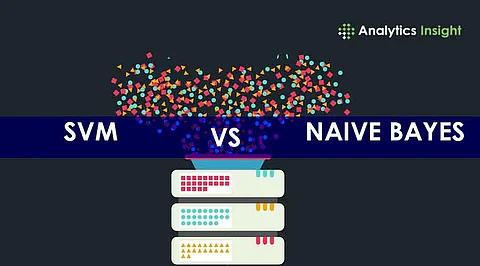

SVM and Naive Bayes are two popular and widely used machine learning algorithms for data classification. They have different strengths and weaknesses, and their performance depends on various factors, such as the type, size, and distribution of the data, the number and complexity of the features, and the computational resources available. In this article, we will compare and contrast SVM and Naive Bayes, and discuss which one is better for data classification.
SVM stands for Support Vector Machine, and it is a supervised learning algorithm that can perform both linear and non-linear classification. SVM works by finding a hyperplane that separates the data into two classes, such that the margin between the classes is maximized. The data points that lie on the margin are called support vectors, and they determine the position and orientation of the hyperplane. SVM can also use kernel functions to map the data into a higher-dimensional space, where a linear separation is possible.
It can handle high-dimensional and complex data, and capture non-linear relationships
It can achieve high accuracy and generalization, and avoid overfitting
It is robust to outliers and noise, and insensitive to the scale of the features
It can be computationally expensive and slow, especially for large and sparse data sets
It can be sensitive to the choice of the kernel function and the hyperparameters
It can be difficult to interpret and explain, and lack probabilistic outputs
Naive Bayes is a probabilistic learning algorithm that can perform both binary and multi-class classification. Naive Bayes works by applying Bayes' theorem, which calculates the posterior probability of a class given some features, based on the prior probability of the class and the likelihood of the features. Naive Bayes makes a strong assumption that the features are independent and identically distributed, which simplifies the computation and reduces the data requirements.
It is fast and easy to implement, and requires less computational resources
It can handle large and sparse data sets, and deal with missing values
It can provide probabilistic outputs and confidence estimates
It can be easily updated with new data, and incorporate prior knowledge
It can make unrealistic and oversimplified assumptions, and ignore the dependencies and correlations among the features
It can suffer from data scarcity and zero-frequency problems, and require smoothing techniques
It can be biased by the prior distribution of the classes, and influenced by the frequency of the features
Join our WhatsApp Channel to get the latest news, exclusives and videos on WhatsApp
_____________
Disclaimer: Analytics Insight does not provide financial advice or guidance. Also note that the cryptocurrencies mentioned/listed on the website could potentially be scams, i.e. designed to induce you to invest financial resources that may be lost forever and not be recoverable once investments are made. You are responsible for conducting your own research (DYOR) before making any investments. Read more here.
